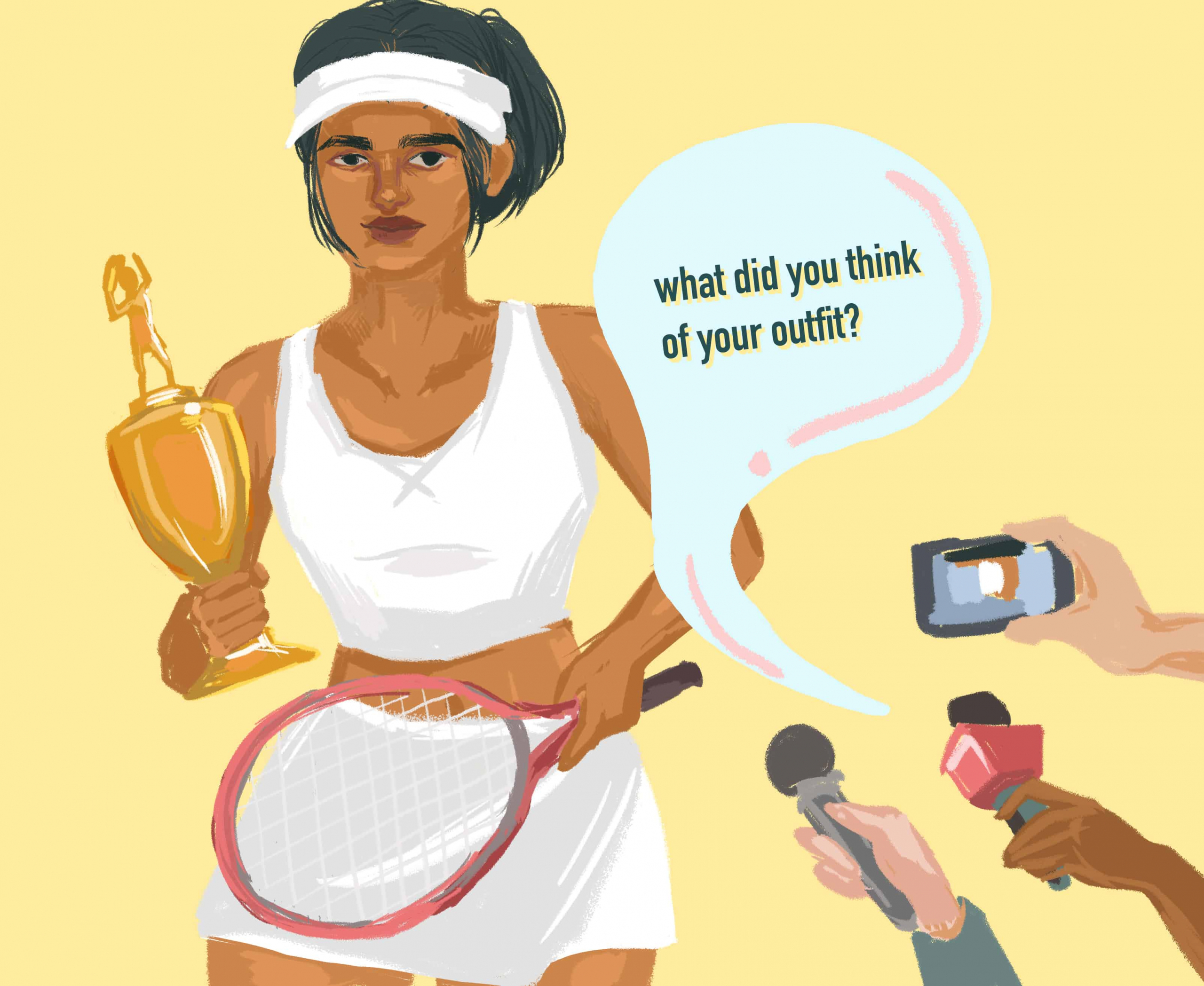In December, a clip of an awards show went viral — as Norwegian soccer player Ada Hegerberg accepted the inaugural women’s Ballon d’Or, host Martin Solveig posed a demeaning question in French: “Do you know how to twerk?” He received a brisk and pursed “no” in response.
It’s almost perfectly ironic that a night that was supposed to mark progress — this was, after all, the very first awarding of the women’s Ballon d’Or — will be remembered for a sexist and inappropriate gaff.
The disrespect that female professional athletes endure doesn’t just happen overseas at select award shows; it is rampant and pervasive in all media, especially here in North America.
A 2017 study conducted by researchers from Purdue University and the University of Southern California found that, over the past three decades, sexism among sportscasters didn’t decrease in occurrence, but rather became more obscure.
In the ’90s, commentators freely used sexual innuendos in coverage of women’s sports. In the 2000s, the language used in commentating lost its inappropriate jokes, but became diluted and indifferent — commentators expressed much less vigour and excitement than they did when covering male athletes.
Another important note that the study pointed out is that when covering female athletes, commentators will more often than not first mention the athletes’ roles as women and mothers before speaking about athletics. Adding this sort of familial information when contextualizing men occurs significantly less.
This kind of language — language that suggests that a woman is a mother or a wife first and an athlete second — characterizes the very nature of female sports coverage in our current time: a sort of microcosmic bubble where female sports are a specific niche, considered unappealing to the general public.
This misconception is reflected in the fact that on ESPN’s SportsCenter, coverage of women’s sports makes up only two per cent of airtime. This is despite the fact that the 2017 study found an increase in viewer interest in events such as the Women’s World Cup.
The current landscape of sports coverage is undeniably androcentric: instead of allotting more time to the triumphs of female athletes, sports stations opt to run male-centred athlete profiles and other “human interest” pieces — time that could be put toward serious coverage of women’s matches instead.
For instance, you are probably more familiar with Sister Jean and the Marlins Man than you are with Tamika Catchings and Natalie Spooner. The former two are viral superfans: a nun who is the Loyala Ramblers’ chaplain, and a man who goes to many sports games wearing the Miami Marlins’ vivid orange jersey. Yes, that’s his entire claim to fame. The latter two, meanwhile, are accomplished athletes: Catchings is a WNBA champion, MVP, and 10-time All-Star, and Spooner is an Olympic gold medalist and captain of the Toronto Furies.
Male athletes get TV slots and viral online attention when they date celebrities or wear different designers — MVPs in women’s sports leagues are struggling to secure the same attention.
This is the reality of women’s sports coverage. It is a media landscape where the shenanigans and antics of men are seen as more interesting and marketable than the genuine achievements of women.
And this is not to say that sports coverage should be totally serious all the time, following exactly half women and half men. Because of its significantly greater popularity, male-centred sports are bound to receive more coverage: but only allotting women 1.6 per cent of airtime is a discrepancy that is far too severe. Fans who want to watch the WNBA or CWHL usually struggle to find streams or adequate reporting.
Cheryl Reeve, head coach of the WNBA’s Minnesota Lynx, asserted that covering women’s sports will make them more popular and mainstream.
For large sports networks, such as TSN and Sportsnet, taking the time to spotlight and cover women’s teams can go a long way in achieving some form of parity.
It’s a disservice to female athletes as well as the general public, who are more than capable of engaging and participating in discussions regarding women’s sports, to report so inadequately on the sector. For now, online publications such as the Victory Press for hockey, High Post Hoops for basketball, and The Equalizer for soccer, are getting the job done.


